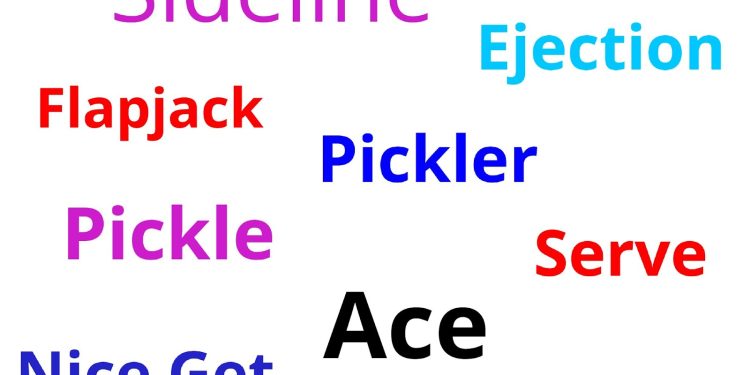
Welcome to our comprehensive guide to pickleball terminology!
Whether you’re a seasoned pro or just starting out, understanding the specific terms and phrases used in the game can make all the difference in your performance and enjoyment.
From standard terms like “dink” and “kitchen” to more advanced concepts like “no-volley zone” and “let serve,” this pickleball glossary will provide you with all the definitions and explanations you need to understand the game of pickleball fully.
So grab your paddle, lace up your shoes, and dive into the exciting world of pickleball terms!
Pickleball Terms – What You Must Know?
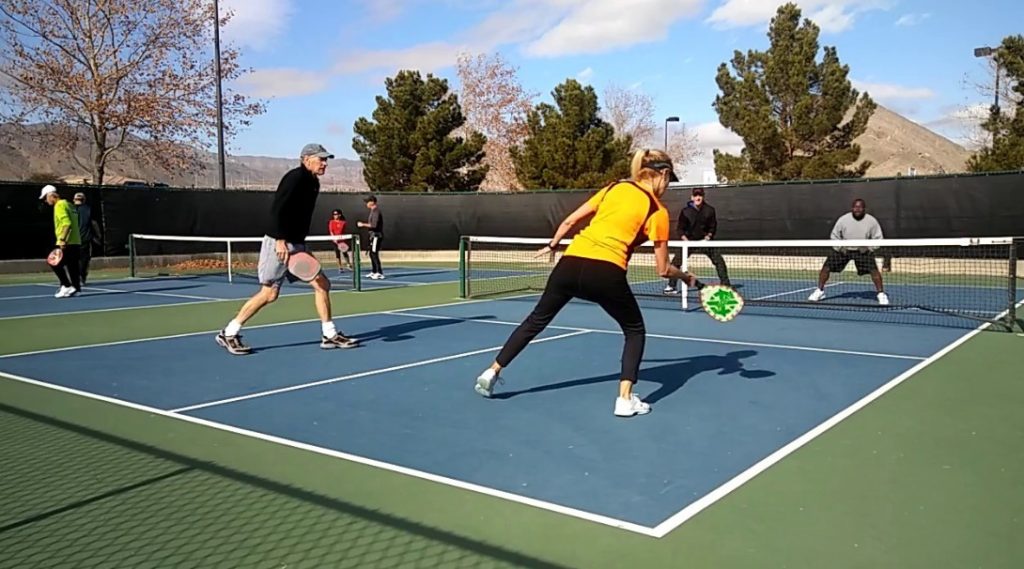
Pickleball is a great game for beginners to learn. The rules are simple and easy to understand. But like any new sport, the terminology can be overwhelming.
Don’t worry; you’re in luck!
We have put together a guide to help you understand the most important terms used in pickleball. Even for experienced players, the language of the game is constantly evolving, so it’s good to brush up on the latest terms.
You’ll soon see that learning the lingo is helpful and fun! With this guide, you’ll be able to confidently join a game and understand the equipment, shots, and any other pickleball jargon you might encounter.
Primary Terms for Pickleball
To play pickleball, you will need four key things: a ball, a paddle, a net, and a basic understanding of the rules and terminology used in the game. You’ll be ready to hit the court and enjoy the game with these items and knowledge.
- Ball: The ball used is typically made of plastic with holes or is similar to a Wiffle ball.
- Paddle: This is the equipment used to hit the ball, and it’s not called a racket.
- Doubles: A game where four players are divided into two teams. Each team has two players.
- Singles: This type of Pickleball game is played by two players, one for each side, with neither team having a second server.
- Skinny Singles: This variation of singles is played by two players, with each player only using half of the court.
- Permanent Object: A permanent object refers to any object or obstacle that is a permanent fixture on the playing surface and cannot be moved during the course of a game. Examples of permanent objects may include ceilings, spectators, etc.
Note: If you’re new to the game and feel a little lost on the rules — don’t worry! We’ve created a comprehensive guide that will teach you everything you need to know about pickleball rules.
Other Essential Pickleball Terms and Definitions
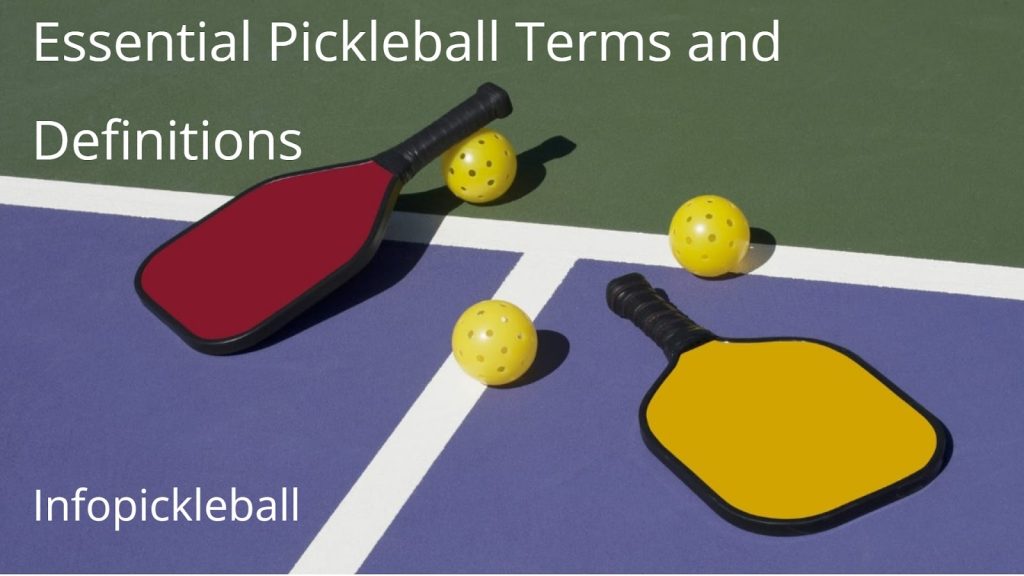
Most of the terms you’ll encounter in the game fall into one of three categories:
- The court
- Gameplay
- The gear you’re using
Knowing these key terms will help you understand the game better and give you the confidence to impress your opponents on the court.
Pickleball Glossary Relevant to the Court
Let’s start learning with some basic court-related pickleball terms:
- Non-Volley Zone: A 7-foot zone on either side of the net closest to the net. If players are standing in this region, they are not allowed to strike balls out of the air with volleys.
- The Non-Volley Line: It is a parallel line to the net that defines the non-volley area.
- Centerline: This refers to the line that runs down the center of the court — dividing it into two equal halves.
- Cross Court: The opponent’s court, diagonally opposite yours, starts after the centerline.
- Backcourt: It refers to the area at the back of the court, near the baseline. It is where players usually hit the ball when trying to make a defensive shot.
- “Two Bounce Rule” or “Double Bounce Rule“: It refers to a rule in pickleball where each team must wait for the ball to bounce once on their side before striking it. This rule applies to both the serving team, who must let the ball bounce before hitting it over the net and the receiving team, who must wait until it bounces before returning the ball. This rule applies only in doubles play.
- Sideline: It indicates the lines that run along the sides of the court, parallel to the net. The sidelines help determine whether a ball hit out of bounds was hit out by the server or receiver.
- Baseline: This is the line marking the back of the court, and it is usually 22 feet distant from the net. The baseline helps determine whether a ball hit out of bounds was hit too long or too short.
Common Serving Terms Used in Pickleball
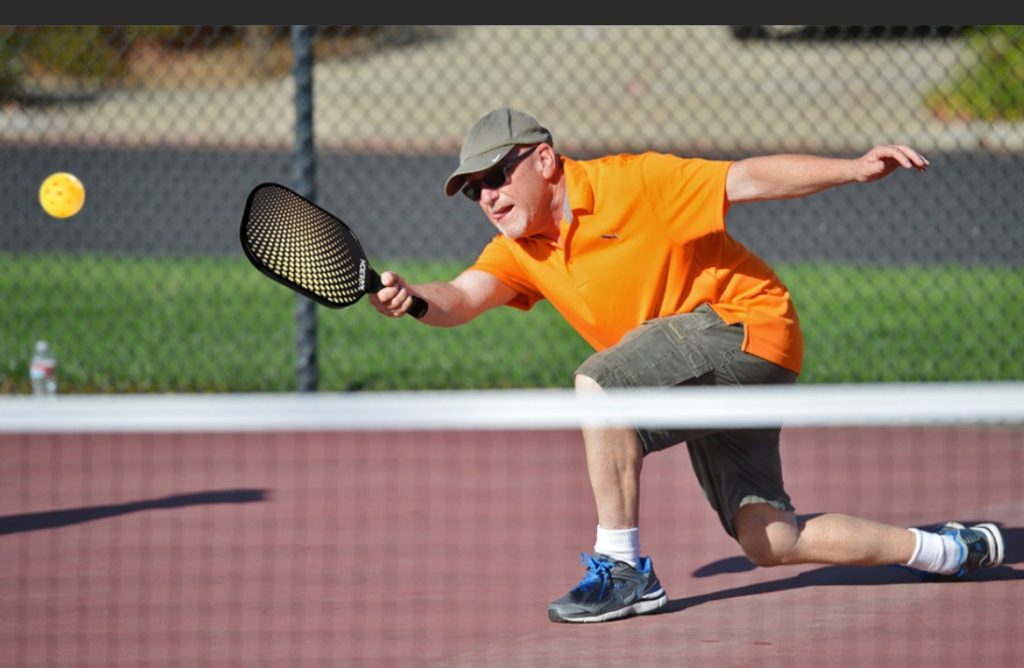
Now let’s dive into some key serving and scoring terms that are essential to understand when playing this exciting sport. These are the game’s building blocks, and understanding them will give you an edge over your opponents.
- Serve: The act of hitting the ball over the net to start a point is known as a serve. In pickleball, the server must hit the ball underhand, and it must clear the non-volley zone before crossing the net.
- Serve Error: A serve that is not executed correctly. Serve errors can include hitting the ball out of bounds, into the non-volley zone, or failing to clear the net.
- Point: The unit of scoring in pickleball. A point is awarded to the team that wins the rally.
- Server Number: In the game of doubles, the server must call the number. It is either 1 or 2, and it depends on whether it’s a first serve or a second serve.
- Line Call: Players determine if the ball is in or out of bounds.
- Volley Shot: Before the ball bounces, players strike it out from the air. Players cannot perform this move when they are in the kitchen.
- Backhand Serve Pick: Striking the ball through the paddle using the backside of your hand and moving the paddle back immediately to get ready for the next shot.
- Foot Fault: A foot fault represents an illegal serve or volley due to incorrect foot placement.
- Ace: It is a service that the opposing team fails to return.
Different Scoring Terms Used in Pickleball
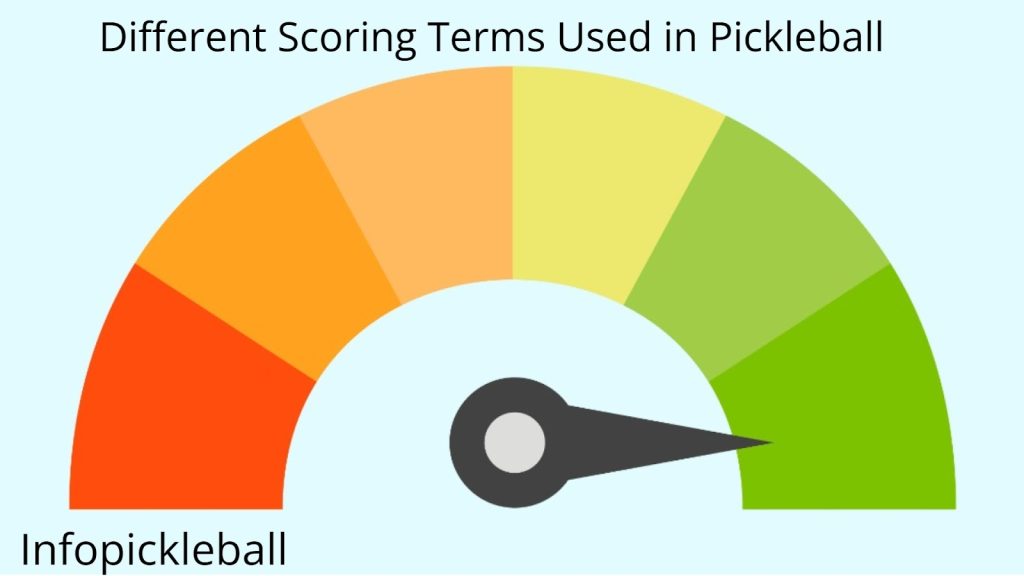
- Lob: A lofted shot that goes above opponents’ heads and hits the backcourt. This shot disturbs the position of opponent players forcing them back to the baseline.
- Overhead Shot: Players strike the ball over their shoulder, just like a serve in tennis.
- Backspin or Sliced Shot: It refers to a shot where the player strikes the ball with a paddle from a high to low arc, causing the ball to spin backward after hitting the crosscourt.
- Top Spin: A roll shot causing the ball to rotate forward by hitting it with the paddle from the low to high arc.
- Around the Post: A unique shot where the player smashes the ball under the net’s top. The ball travels around the net post and lands in the opponent’s court.
- Dink: It refers to a softly hit shot that lands in the opponent’s non-volley zone. A dink is an effective shot that is mainly difficult to return.
- Approach Shot: A shot where the player has to rush forward toward the net and strike the ball.
- Champion Shot: It refers to a hit which bounces double in the opponent’s non-volley zone.
- Groundstroke: It represents a shot hit after the ball bounces in the court once. The player hits this shot simply following the basic swing pattern.
- Punch Shot: A smashing shot struck with the slightest swing by the player. It is usually a volley, hit before the ball bounces from the court.
- Erne or Bert: It is a legal, high-reward pickleball shot hit outside the court near the Non-Volley Zone. Erne is a winning shot in response to an opponent’s dink that makes the ball drop near the net.
Different Slang Terms Used in Pickleball Game
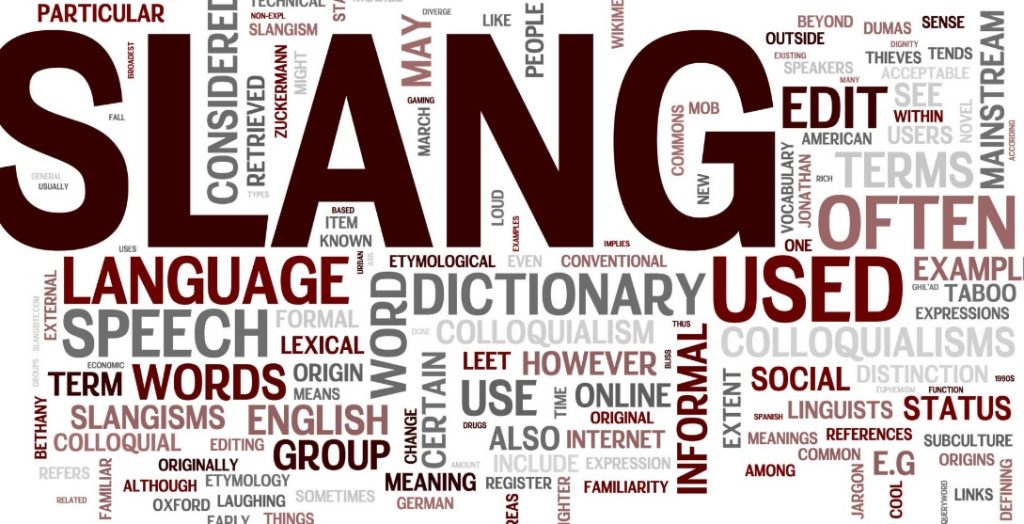
These slang terms and pickleball says have become more popular with the increasing craze for the game worldwide.
- Falafel: A slang term explaining a short shot that does not reach its required potential. It happens due to a little or no-power strike by the player.
- Flapjack: Another slang term represents a shot must bounce once from the ground before the player smashes it to the opponent’s court.
- Dill Ball: It is a live ball in play, referring to a shot where the ball has bounced once on the opponent’s court.
- Pickle: An informatory shout from the player indicating that he is about to serve. It is to make the opponent player understand that the competitor is ready to serve.
- Pickled: A term used for the team or an individual player who has scored zero points in the whole game and lost the match.
- Pickler: A terminology or expression used for a Pickleball game addict who is crazy about the game and keeps talking about it all the time.
- Pickledome: This term refers to the place or court where the championship match in a tournament is played
- Rhodium: It is an appreciating term for a player who hits a rare and excellent shot.
- Trickster: A word for a particular player who always tries to play a trick shot and doges the opponent mate with a showboat move.
Some Other Important Terms
Here are some other essential terms players use during the game on different occasions. It includes a few compliment terms to applaud the players when they smash a precious shot.
Some words in the list also explain the foul shots and warnings determined by the referee or Line Judge.
- Carry: It means a hitting action by the player where the ball hits the paddle twice or is carried along its surface. The referee will consider it a foul if the player does it intentionally.
- “Opa!”: After the third strike of the match, a cheer is frequently shouted out. Opa is an exclamation that signifies that the required bounces have been met and open rallying has begun.
- Slammers: This term refers to the players who hit hard and fast.
- Hinder: It refers to any element or object that affects the gameplay and hampers either the player or team during the game. Any point during the hinder will be a dead ball, and the point will replay.
- Poaching: Indicates the act or movement where one player crosses the centerline and hits the ball coming to his partner.
- Nice Get: An appreciative term used when a player returns a difficult-to-reach ball.
- Nice Rally: The applauding phrase for both teams when they attempt several shots between them in one go.
- Verbal warning: A warning issued by the referee to ensure fair play. The referee may issue one verbal warning to each team.
- Technical warning: The referee issues a technical warning to a team or an individual for showing acceptable behavior in the game. In this case, the referee does not deduct the points but calls a penalty.
A Few Professional Pickleball Terms and Definitions
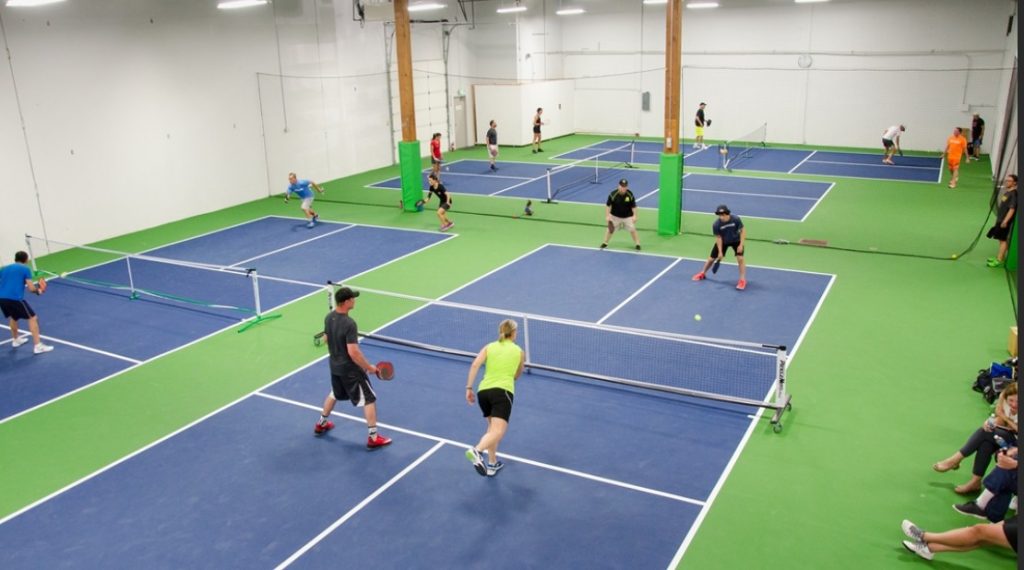
Following professional terms used in this game may enhance your knowledge and help you have a firm grip on the on-field technical terms.
- Level Play: This term explains the skill level of a player. The skill levels or ratings vary from 1.0 to 6.0 depending upon the proficiency level of a player.
- Junior Player: A player whose age lies between 7 to 18 years. USA Pickleball Association introduced this term for competitors below 18 years of age.
- Ladder: It refers to a graphical display of the players’ performances in a league or their whole career. It features the names and progress of players in a sporting event.
- Profanity: An offensive and impolite word or gesture used for or by the opponent players during the match is called profanity.
- Ejection: It indicates restraining a player from participating in the game due to their intolerable behavior. A Tournament Director or a Chief Selector acts upon ejecting the players considering their discipline issues and unacceptable actions.
- Open Play: It refers to a predetermined time when players of any skill level show up on the court and play a friendly match. Its purpose is to create an amiably competitive environment where players of different levels play, practice, and learn from each other.
General Terms Defining the Skill Levels of the Players
USA Pickleball Tournament Player ratings are more prominent and vivid. But, many clubs and leagues use the most fundamental skill levels to categorize their players.
- Beginner Players: This category includes the players who have yet to gain more advanced knowledge of sports rules and strategies. They are amateur players with a 3.0 or less rating.
- Intermediate Players: It includes players with ratings between 3.5 and 4.0. Such players have a moderate understanding of game rules and regulations.
- Advanced Players: This category features players with a rating of 4.5 or above. They are the most experienced players with a strong hold over the game rules and regulations. They know how to play and tackle all the tricky shots in the game.
Sum Up
Mastering the terminologies of pickleball is crucial to understanding and excelling at the game. From serving and scoring terms to specific shots and strategies, understanding the language of the game is essential to becoming a successful player.
By familiarizing yourself with the terms outlined in this blog, you will be able to understand the game better and make more informed decisions on the court. Happy pickleballing!

Hi, I’m Sana Sabir. I’m a freelance content writer from Pakistan. I am passionate about fitness and sports, so much so that it’s the reason my career has taken off. My background is in business studies and I love to write about fitness and sports-related topics.
I also write articles on other niches like healthcare, fashion, and lifestyle. Being a fitness lover who has always been fascinated by the human body and how it works, I had always wanted to be a fitness writer since an early age. I enjoy trying new sports, one of my favorites of which is pickleball.
I’ve been writing for 3 years now, and my work has been published on many fitness, health, and lifestyle blogs. I always entertain my readers with some interesting and informational articles. To ensure my articles are genuine and relevant, I perform in-depth research, explore case studies, and read books on the topic before writing. Besides writing, I love painting, cooking, and gardening.
